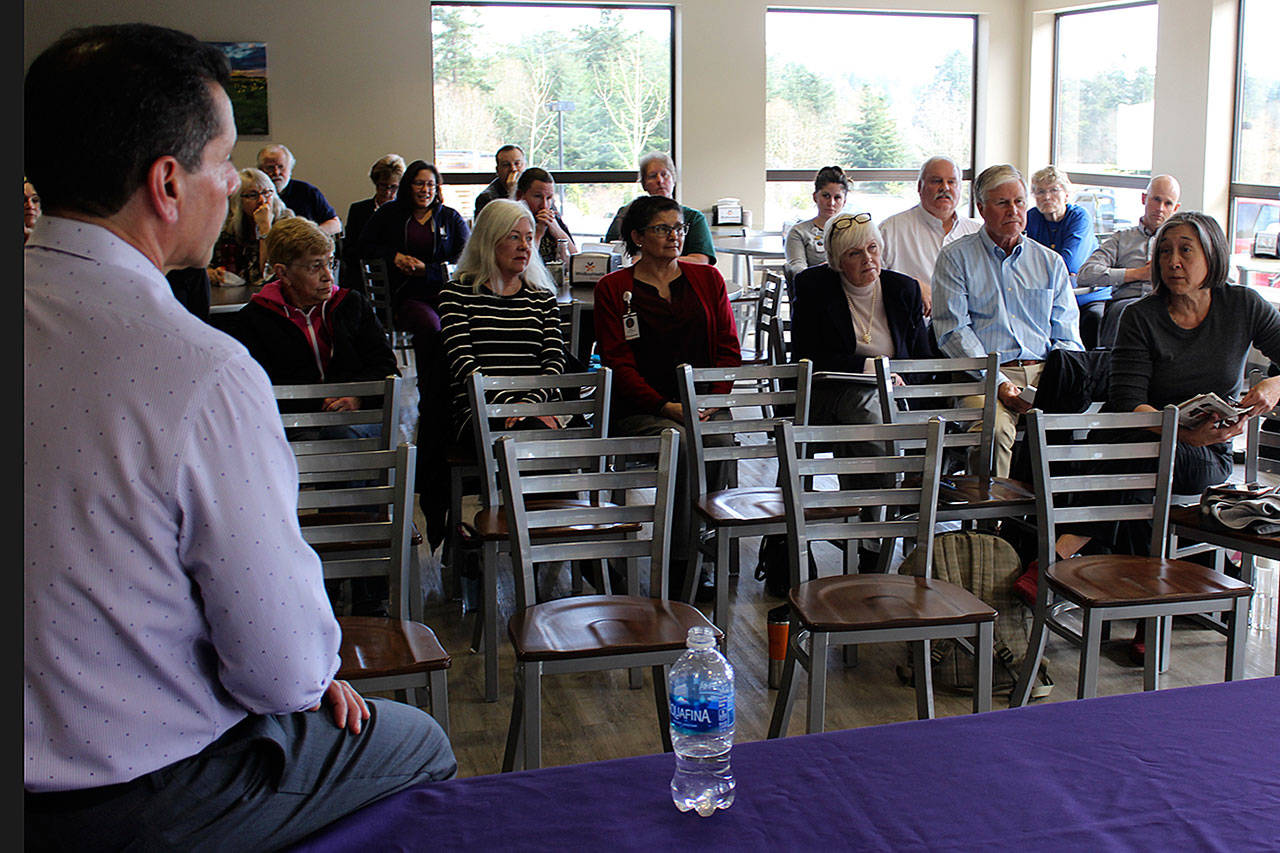WhidbeyHealth administrators and board members are conceding they failed to plan for possible construction budget overruns during the building of the hospital addition and renovation of its old building.
In 2013, voters approved a $50 million bond for the project. The new wing is open, but planned renovation has been put on hold.
The lack of a contingency fund, along with an unexpected regional construction boom, contributed to an estimated $3 million in cost overruns, Ron Telles, chief financial officer, explained during a public forum Wednesday.
WHIDBEYHEALTH IS seeking a low-interest $20 million loan from the USDA Rural Health program to finish the project.
Telles said the loan is mostly needed to tackle a long list of deferred maintenance.
“We need major infrastructure updates in the old building,” Telles said. “We have to do the improvements in order for us to be in code compliance.”
A new ventilation and heating system and electrical upgrades are estimated to cost about $5.5 million.
A new in-patient hospital pharmacy and equipment, estimated to cost about $3.8 million, is also needed.
LAST YEAR, the pharmacy was forced to shut down when a major piece of equipment, called a hood, was found to be out of code compliance. The hood provides proper ventilation when mixing chemotherapy and other drugs.
That service is now being outsourced, adding up to $1 million every four months, said CEO Geri Forbes.
“You can see why it’s important to get a pharmacy back in our system.”
A remodel of the emergency department, costing about $5 million, is also needed because space is too cramped for increased demand, she said.
A NEW look for the hospital’s main lobby to better blend with the new addition is also on the wish list, costing about $2 million.
Some 25 people attended the hearing, many of them current and past employees.
Telles explained that the federal government loan is the best choice for the health system to seek over other options, such as revenue bonds and general obligation bonds.
It could be paid off over 30 to 40 years, he said, with a locked-in interest rate of 3.25 to 3.75 percent.
THE LOAN would be paid off with revenue from medical services, according to hospital administrators.
WhidbeyHealth is now making money after running a deficit for several years. Because it is a non-profit, publicly financed system, all revenue over expenses must be reinvested.
“We really focused for years on just making ends meet,” Telles said.
The USDA rural loan program is a federal program that provides affordable funding to develop essential community facilities in rural areas.
WHEN TELLES said that taxpayer money wouldn’t be used to pay back the loan, Manette Merrill’s hand shot up.
“Just to be clear, this is a USDA loan, so it is taxpayer money coming from all over the country,” she said.
“This is all of our money being used, so it’s incumbent it be used wisely.”
A feasibility study to analyze the hospital’s finances is required for the loan application.
“The USDA needs a thorough analysis to see how the loan affects the hospital finances,” Telles said.
USDA officials, who have already toured the hospital and met with administrators, left a favorable impression, Forbes said.
Questions from the public led to further explanations about cost projections and overruns.
THE NEW 39-bed wing, with single patient rooms, roomier birthing suites and state-of-the-art infection control measures opened this past fall.
However, the planned conversion of the old hospital rooms and labor suite into expanded clinical space — originally part of the $50 million construction price tag — stalled when the funds ran out.
Original cost projections couldn’t hold up, Forbes said, as Seattle’s building spree cut deeply into the region’s construction labor force.
“This price was scoped out six years ago,” Forbes said. “The price increase in this market has changed phenomenally.”
Every trade — plumbers, electricians, construction crews, painters — is in great demand leading to increased labor costs, she said.
BOARD PRESIDENT Ron Wallin and member Grethe Cammermeyer have served on the building committee since the new addition’s conception.
Architects and construction crews were held accountable for their costs and for adhering to the original design, Wallin said.
“The new wing, it’s not a Taj Mahal,” he said. “It’s a very functional hospital and with it, we’ve been able to attract surgeons and other doctors here.
“I hate for any project to go over budget,” Wallin said.
Cammermeyer said she and others were “naive” in the beginning, overestimating what could be tackled with the bond money.
The fact the project went over budget “is not taken lightly,” she said.




